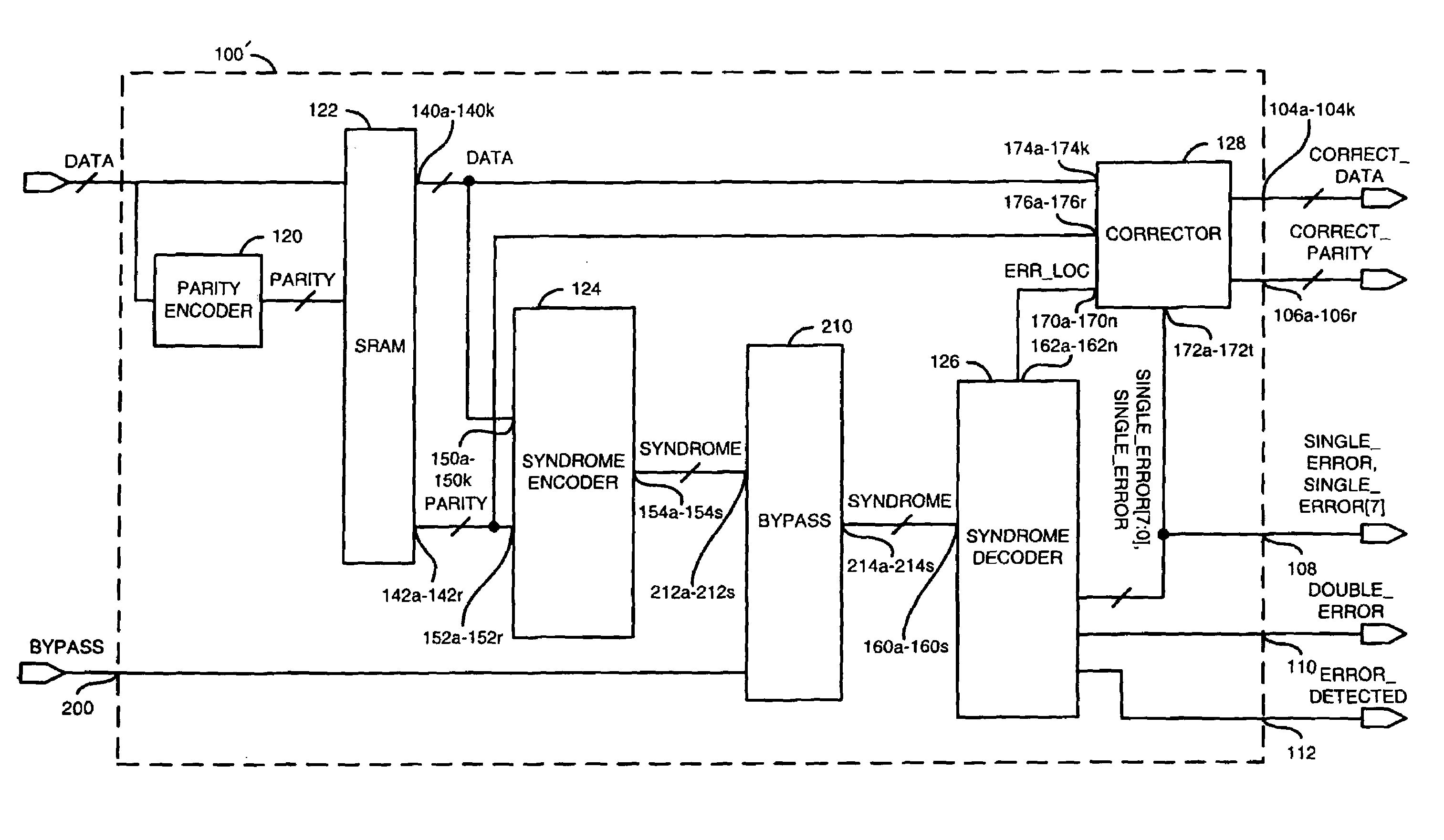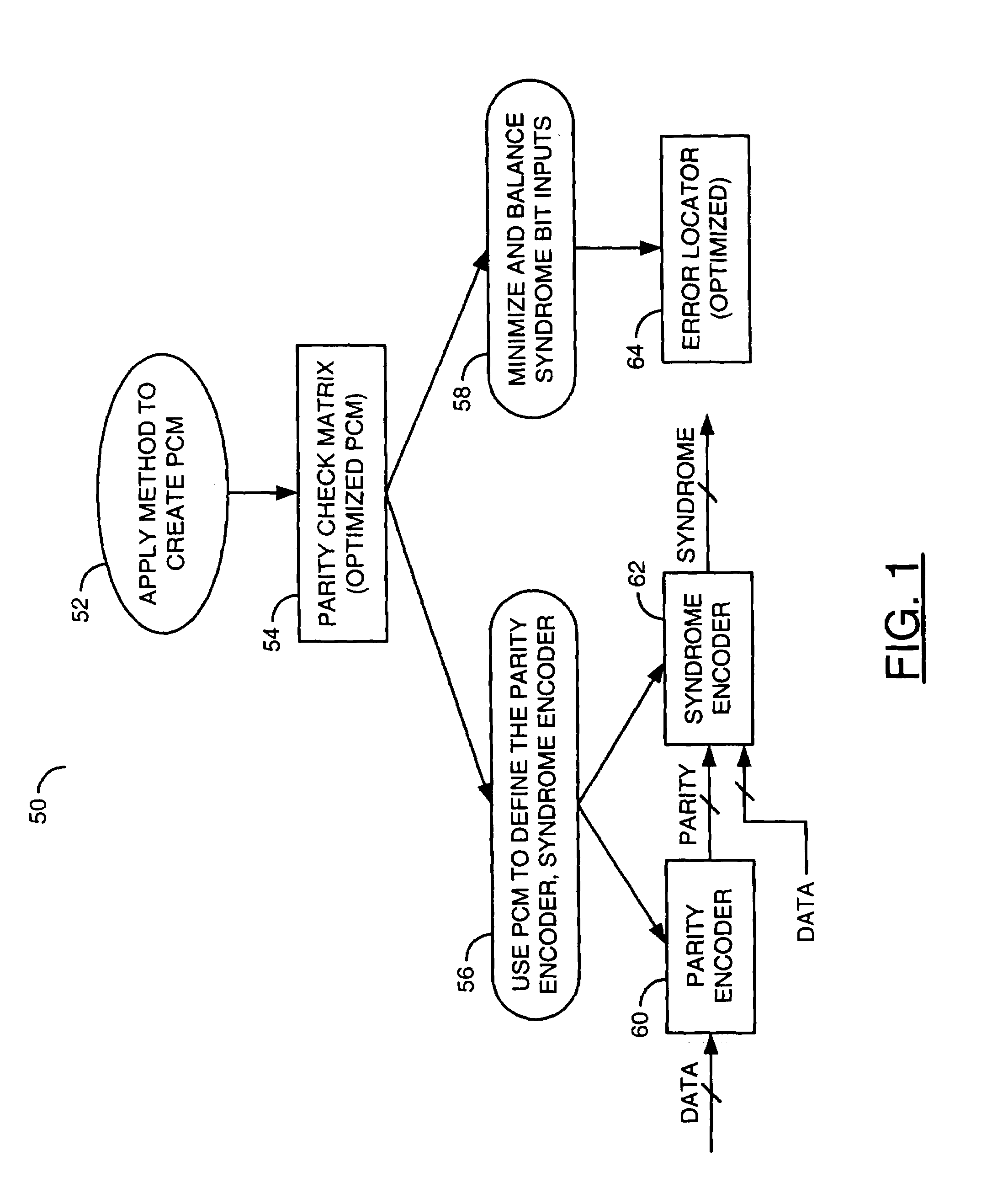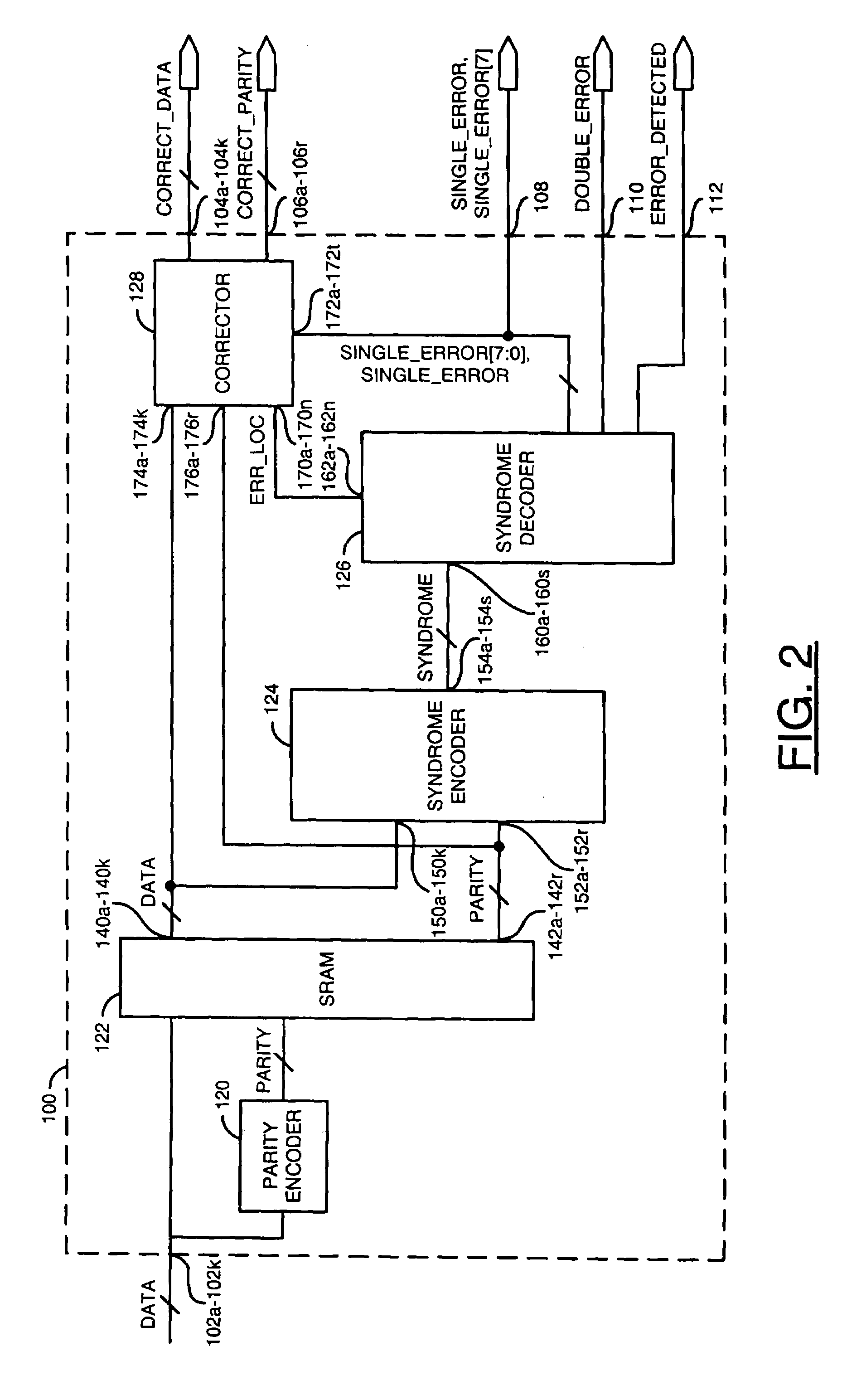Construction of an optimized SEC-DED code and logic for soft errors in semiconductor memories
- Summary
- Abstract
- Description
- Claims
- Application Information
AI Technical Summary
Benefits of technology
Problems solved by technology
Method used
Image
Examples
first embodiment
[0053]In a first embodiment, the parity encoder 60 may be implemented as a non-inverting parity encoder using exclusive-OR (e.g., XOR) gates (e.g., alternative 1 in TABLE 1). The non-inverting parity encoder 60 generally presents the parity bits PARITY[0]–PARITY[8] that are the logical combinations of the data bits DATA[0]–DATA[127] generated using XOR logic gates. Each row of the PCM 54 may define the given parity bits PARITY[0]-PARITY[8] generated and the data bits DATA[0]–DATA[127] to be combined to generate the given parity bits PARITY[0]-PARITY[8]. For example, on row 1 of the PCM 54, the parity bit PARITY[0] may be selected as the output. The parity bit PARITY[0] generally corresponds to an ECC parity bit 0. The parity bit PARITY[0] may be equal to an XOR combination of the data bits DATA[0]–DATA[27], DATA[84]–DATA[98], DATA[106], DATA[107], DATA[110], DATA[112], DATA[117], DATA[120], DATA[121], DATA[123], and DATA[127]. The parity bits PARITY[l]-PARITY[8] may be generated sim...
third embodiment
[0055]In a third embodiment, the parity encoder 60 may be implemented as an inverting parity encoder using XOR gates (e.g., alternative 3 in TABLE 1). Each parity bit PARITY[0]-PARITY[8] may be a logical combination of data bits (e.g., DATA[0]–DATA[127]) defined by the PCM 54 and the logic value 1. Any value combined with logic 1 using an XOR gate will generally result in the digital complement (e.g., opposite) of the value. For example, on row 1 of the PCM 54, the parity bit PARITY[0] may be presented as the output. The parity bit PARITY[0] may be equal to the XOR combination of the data bits DATA[0]–DATA[27], DATA[84]–DATA[98], DATA[106], DATA[107], DATA[110], DATA[112], DATA[117], DATA[120], DATA[121], DATA[123], DATA[127] and the logic 1. The parity bits PARITY[1]-PARITY[8] may be generated similarly to the parity bit PARITY[0].
[0056]In a fourth embodiment, the parity encoder 60 may be implemented as an inverting parity encoder using XOR gates with an output inverted by NOT gate...
fifth embodiment
[0070]In a fifth embodiment, the syndrome encoder 62 may be implemented as a non-inverting syndrome encoder using XNOR gates. Each syndrome bit SYNDROME[0]-SYNDROME[8] may be a logical combination of the data bits DATA[0]–DATA[127] and a respective one of the previous parity bits PARITY [0]-PARITY [8] and the logic value 0.
[0071]The fifth embodiment of the syndrome encoder 62 may implement the following two rules to generate the non-inverting syndrome bits SYNDROME[0]-SYNDROME[8]:
[0072]Rule 1: When an odd number of the data bits DATA[0]–DATA[127] and a previous parity bit PARITY[0]-PARITY[8] are presented to the syndrome encoder 62, XNOR logic gates may be implemented to generate the respective syndrome bit SYNDROME [0]-SYNDROME[8]; and / or
[0073]Rule 2: When an even number of the data bits DATA[0]–DATA[127] and a previous parity bit PARITY[0]-PARITY[8] are presented to the syndrome encoder 62, XNOR logic gates may be implemented to combine all of the data bits DATA[0]–DATA[127] prese...
PUM
 Login to View More
Login to View More Abstract
Description
Claims
Application Information
 Login to View More
Login to View More - R&D
- Intellectual Property
- Life Sciences
- Materials
- Tech Scout
- Unparalleled Data Quality
- Higher Quality Content
- 60% Fewer Hallucinations
Browse by: Latest US Patents, China's latest patents, Technical Efficacy Thesaurus, Application Domain, Technology Topic, Popular Technical Reports.
© 2025 PatSnap. All rights reserved.Legal|Privacy policy|Modern Slavery Act Transparency Statement|Sitemap|About US| Contact US: help@patsnap.com



